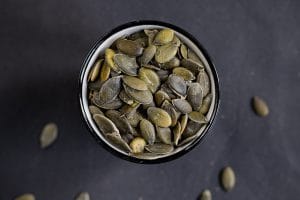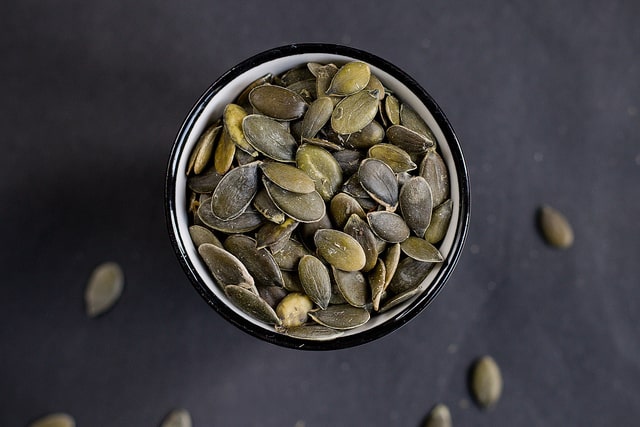A Guide to Single Ingredient Food Labeling Using Online Nutrition Analysis

Single ingredient food labeling doesn’t have to be complicated—especially when you use an FDA-compliant online nutrition analysis software. Photo source: Flickr user Marco Verch.
I recently worked with a client who had an incredible passion for pumpkin seeds. She came to me a few months before launching her dream product—pure, raw, organic Austrian pumpkin seeds—to get a little help with her food labels. Because her product was a single ingredient food, she was unsure whether or not she needed to provide the same type of nutrition information as with multi-ingredient products.
This is a question I get asked quite often, actually. I suspect it is because there doesn’t seem to be much information out there about single ingredient food labeling. And because the FDA doesn’t really address it directly in a single document, people are unsure what the rules really are. So, in hopes of clarifying the issue, I’m going to walk you through single ingredient labeling so you can feel confident in moving forward with getting your product on retail shelves as quickly as possible.
Single Ingredient Labeling Requirements
My client was surprised to learn that the requirements for single ingredient food labeling are essentially the same as for multi-ingredient products. The exception to this, of course, is that raw agricultural products (i.e. fresh fruits and vegetables) do not need to have nutrition facts panels. This caused some confusion for my client because she assumed that raw pumpkin seeds should be considered raw agricultural products, but to the FDA, they aren’t.
I explained that she would essentially have to go through the same steps as she would with any other food product. Single ingredient food products require the following information on the packaging:
- A statement of identity (i.e. pumpkin seeds)
- The net quantity of package contents (the weight of your product before packaging)
- The name, address, and contact information of the manufacturer, distributor, or packer
- A complete nutrition facts panel (including an appropriate serving size)
- An allergen warning, if applicable
Although single ingredient food products typically don’t require an ingredient list or statement, I recommend providing one anyway in order to confirm to the customer that the product is purely what it claims to be and nothing else. Especially in the age of sneaky food additives, voluntarily including an ingredient statement is a good rule of thumb.
Using Online Nutrition Analysis for Your Single Ingredient Product
For single ingredient food products, as for most products, I recommend using online nutrition analysis software to generate your nutrition facts panel. Not only is it your cheapest option, it will also be the easiest and quickest. In fact, with just one ingredient, you should be able to have your nutrition facts finished in less than ten minutes, as you won’t have to spend any time entering an extensive list of ingredients and amounts for a recipe.
Once you find a reputable, FDA-compliant online nutrition analysis software, simply create an account and select your membership (likely a per product pricing plan if you only have one or two products). Then, you can get started.
Here are the steps required to make a nutrition facts panel for your single ingredient product:
- Create a new recipe, then search for your ingredient in the ingredient database and select it.
- For the quantity, enter the amount for 1 serving (i.e. 20 grams).
- For the serving size, enter the same amount as you did for one serving (i.e. 20 grams).
- To determine servings per container, divide the volume of the container by the serving size.
- Edit your allergen statements and ingredient list.
- Choose a label format that best suits your package and download your nutrition facts label—you’re all finished!
Of course, you may want to add some additional voluntary nutrient information to your nutrition facts panel as well, depending on the nutritional profile of your product. The client I was working with, for instance, added values for magnesium and iron to her nutrition facts panel to highlight the fact that pumpkin seeds contain high amounts of these nutrients. If you are interested in doing this, just make sure you choose an online nutrition analysis software that provides a complete list of the nutrient information, not just the ones provided on the nutrition facts panel.
At the end of the day, single ingredient food labeling isn’t nearly as confusing as it seems to be at first. As long as you follow the specific nutrition labeling guidelines, have a good grasp of the more general FDA food labeling requirements, and use an online nutrition analysis software, making your nutrition label will be a breeze.
At LabelCalc, we strive to make nutrition labeling as easy and affordable as possible, whether your food product has one ingredient or several. To learn more about our FDA-compliant software, contact us today.

